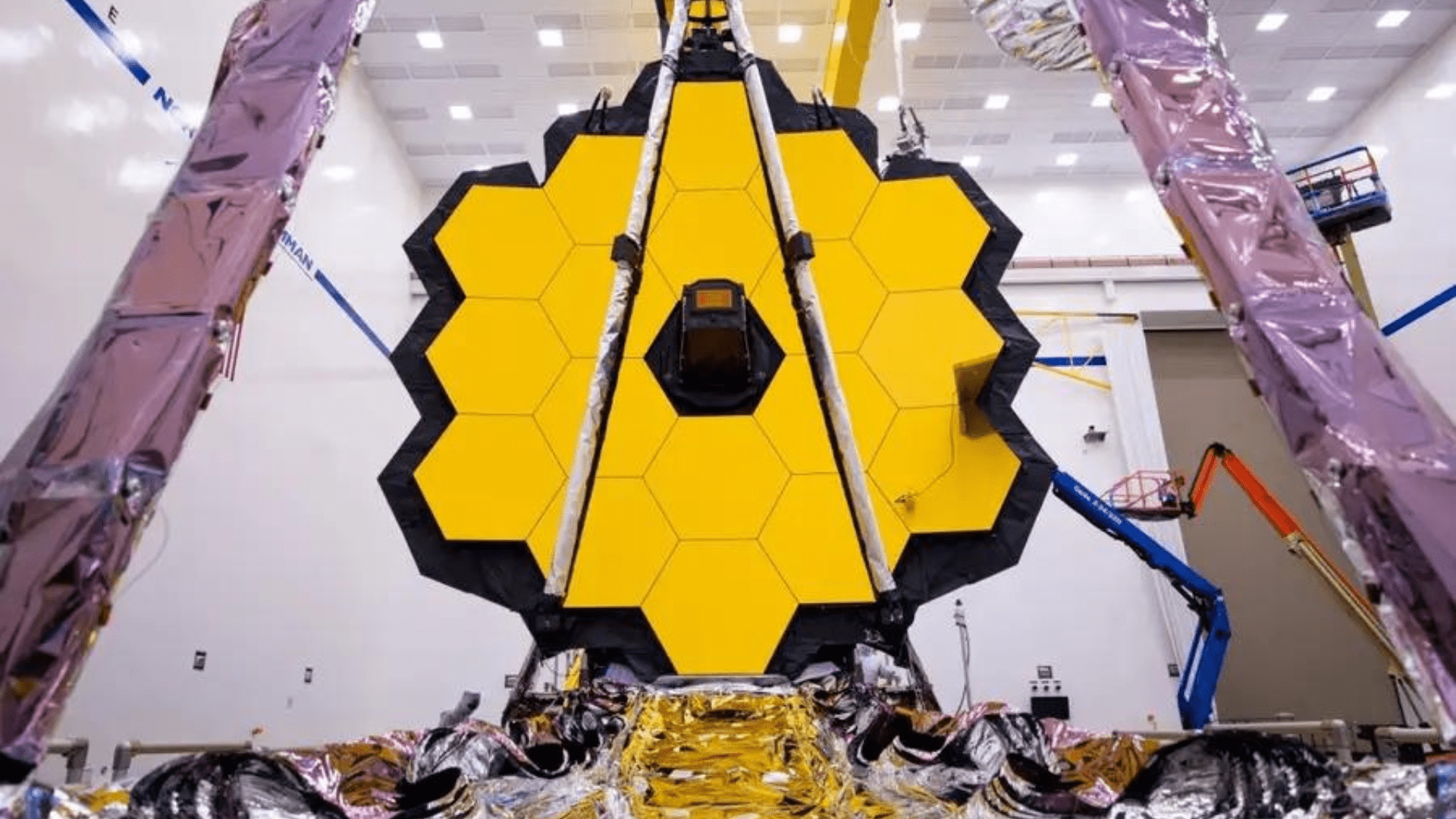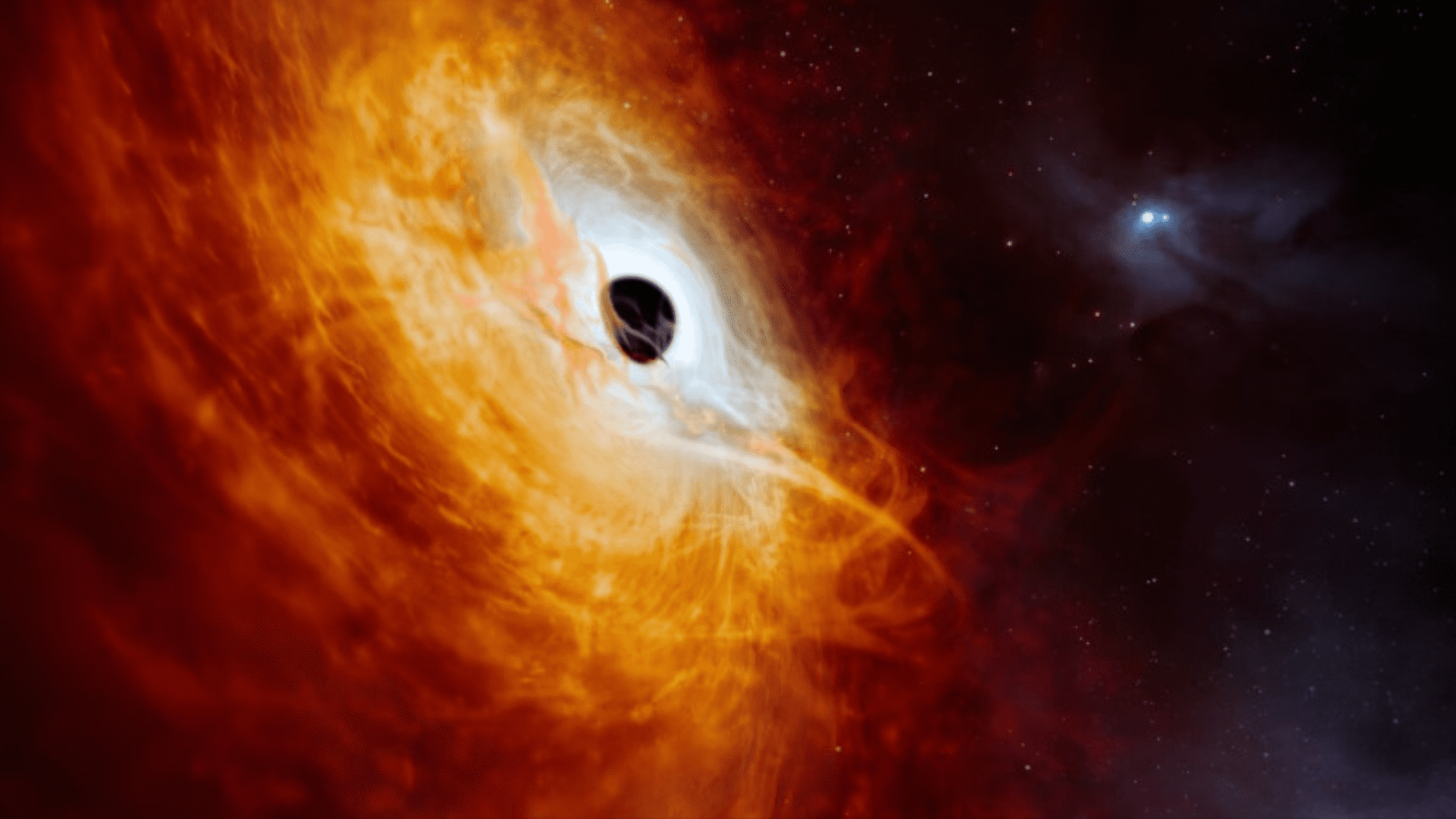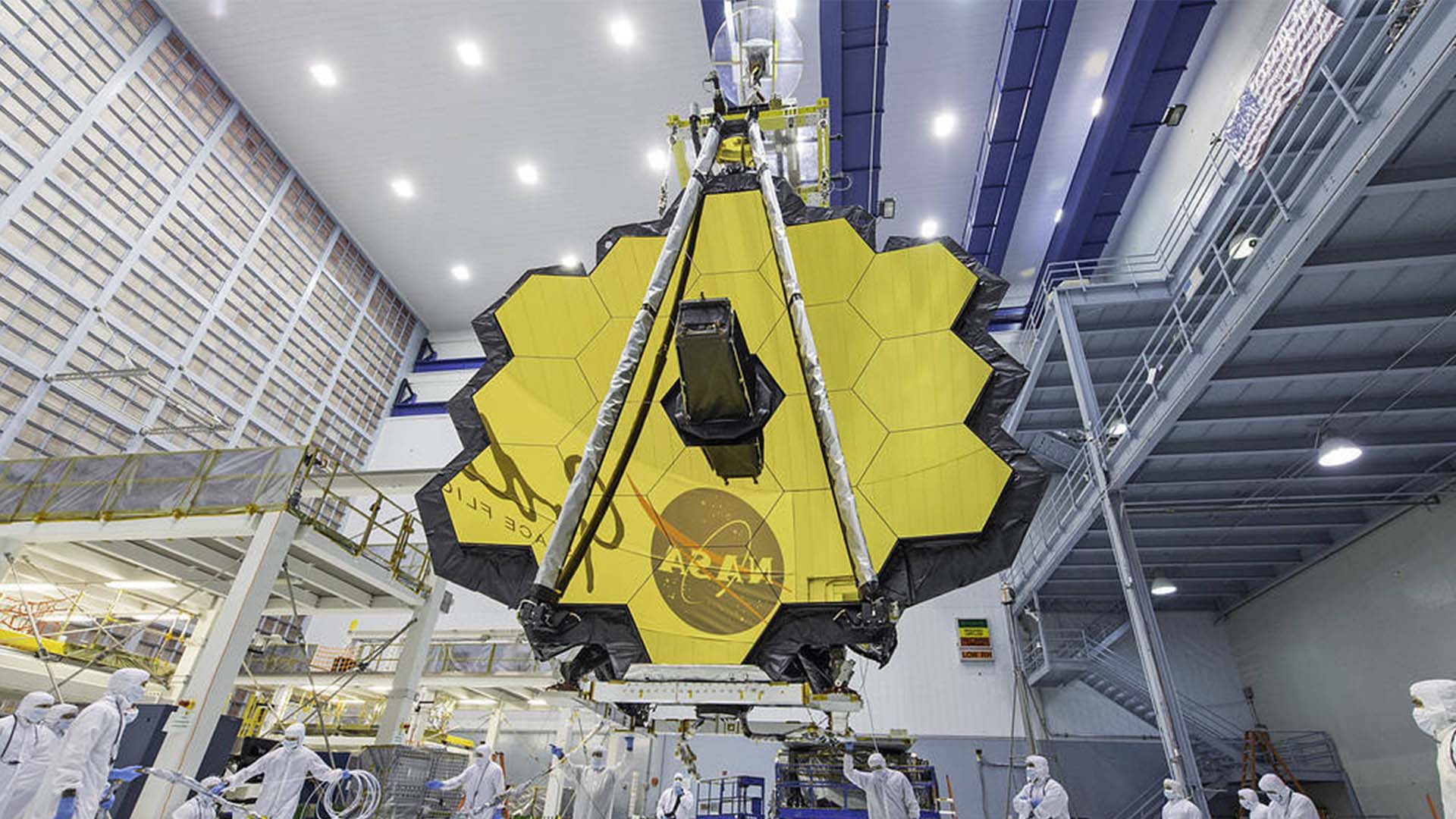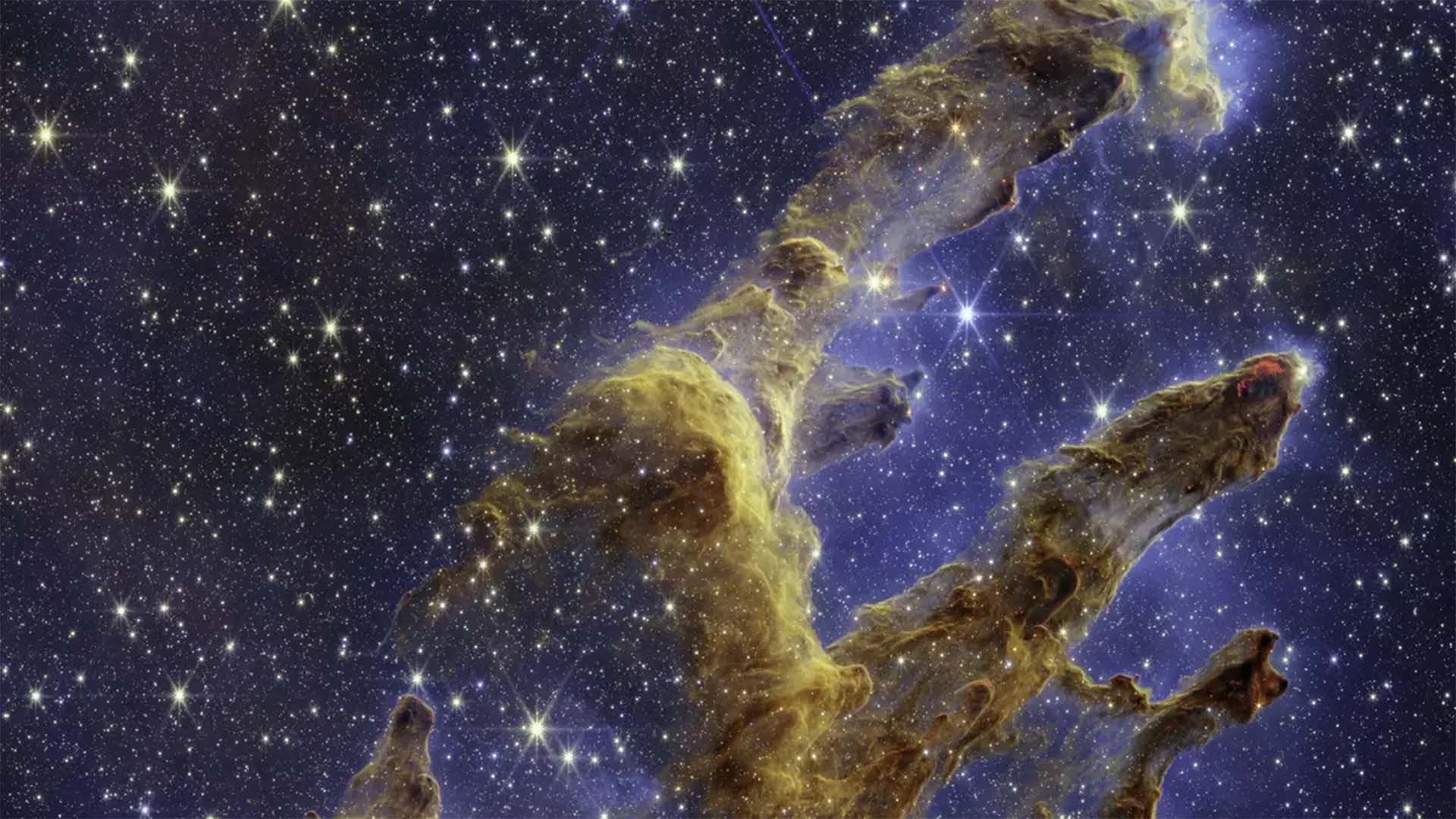Since launching two years ago, the James Webb Space Telescope (JWST) has revolutionized how we understand galaxy formations. Specifically, the early stages of a galaxy forming. Astronomers are looking at new images captured by the Webb Telescope and they believe the images are of a supermassive black hole.

Early Galaxy Formation
It’s not uncommon for the Webb Telescope to help us understand early galaxy formation. Since launching, JWST revealed a host of massive galaxies in the early universe. It also detected new types of objects in space. These new images from Webb show astronomers a potential quasar. A quasar is a supermassive black hole at the center of a galaxy that rapidly accumulates materials.
Images show the black hole sitting behind a wall of thick dust that dims its light. According to astronomers’ measurements, they find it to be significantly larger than its host galaxy compared to those in the more local universe. The growing abundance of materials gives off large amounts of radiation. This allows it to outshine its host galaxy while giving it a bright, compact, star-like appearance.
Dr. Lukas Furtak and Professor Adi Zitrin are the two astronomers who identified the supermassive black hole. The images they analyzed are for the UNCOVER program led by Ivo Labbé from Swinburne University of Technology and Rachel Bezanson from the University of Pittsburgh. This program imaged the field of galaxy clusters, called Abell 2744, where astronomers spotted the supermassive black hole.
The large mass in this cluster of galaxies bends spacetime and creates a gravitational lens that magnifies galaxies in the background. This opens up the opportunity for astronomers to research distant galaxies that they otherwise would never have discovered. The newly detected black hole’s color helped astronomers recognize its possibilities.
Explore Tomorrow's World from your inbox
Get the latest innovations shaping tomorrow’s world delivered to your inbox!
I understand that by providing my email address, I agree to receive emails from Tomorrow's World Today. I understand that I may opt out of receiving such communications at any time.
Uniquely Red

Bezanson said, “Analysis of the object’s colors indicated that it was not a typical star-forming galaxy. This further supported the supermassive blackhole hypothesis.” Bezanson added that the size supports their hypothesis as well. “Together with its compact size, it became evident this was likely a supermassive black hole, although it was still different from other quasars found at those early times.”
Understanding Supermassive Black Holes
Astronomers discovered the red dot, which ended up being the red supermassive black hole, last year. That was only the beginning of its story. After analyzing its size and mass, researchers discovered that the black hole’s mass is disproportionately high.
One of the lead authors Jenny Greene said, “Even packing all the possible stars into such a small region, the black hole ends up being at least 1 % of the total mass of the system.” Greene and the team of researchers discovered this to be the case for several supermassive black holes in the early universe. How the supermassive black holes grow remains a question. It’s still not well known what came first, the galaxies or the black holes.
Zitrin said, “In a way, it’s the astrophysical equivalent of the chicken and egg problem. We do not currently know which came first–the galaxy or black hole, how massive the first black holes were, and how they grew.”





